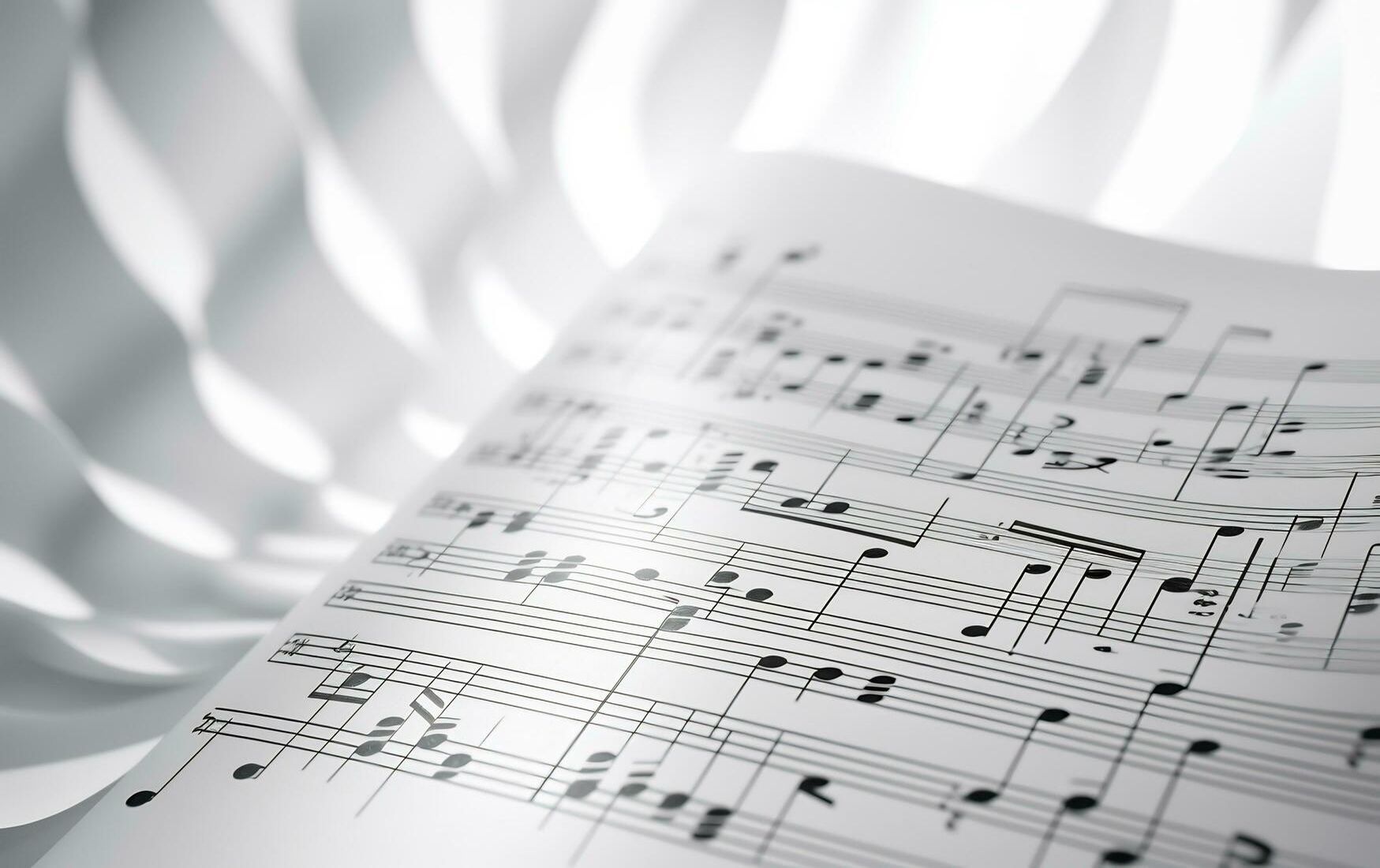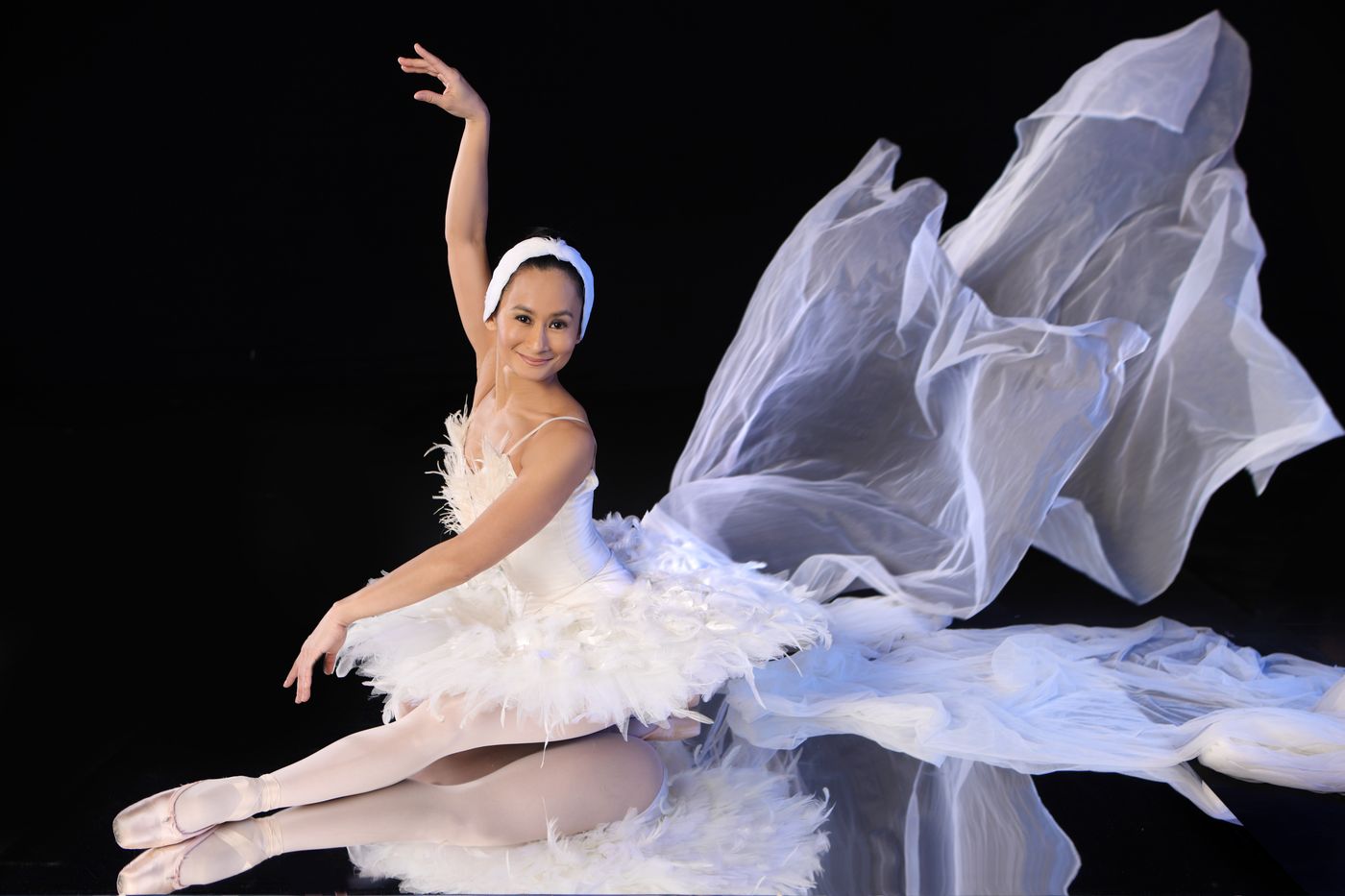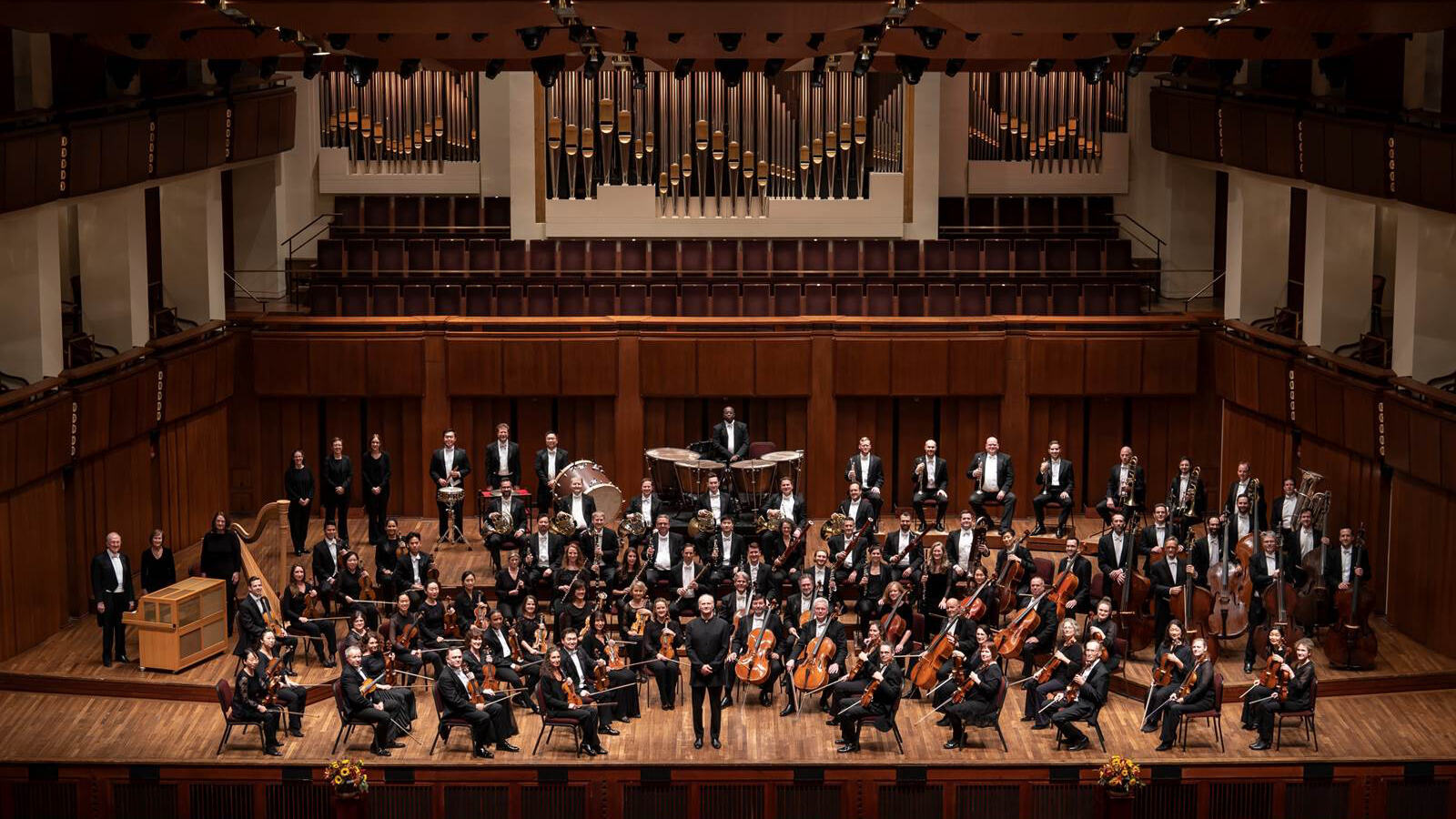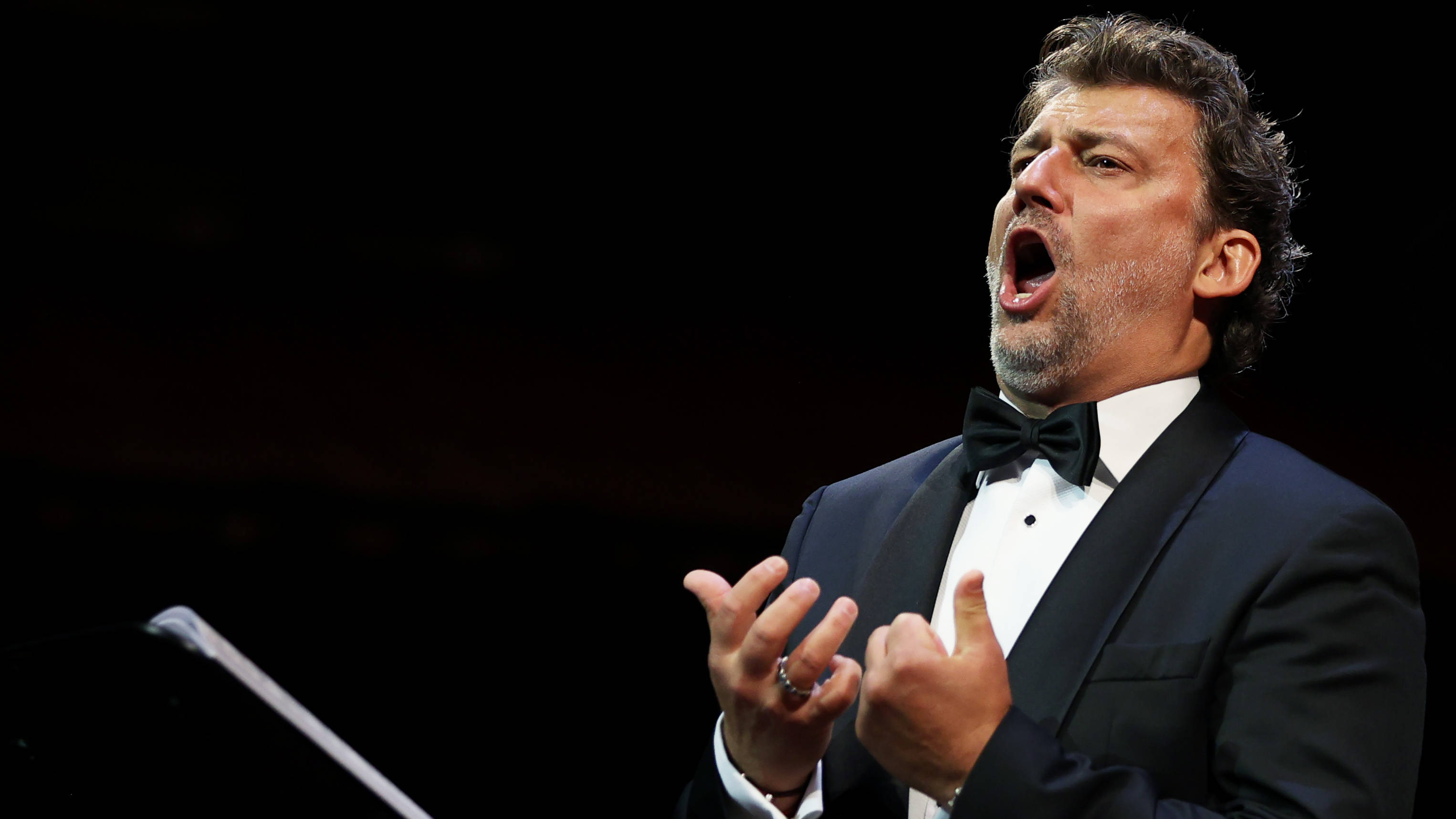

Jazz
What Is Improvisation In Jazz Called
Modified: January 22, 2024
Discover the art of improvisation in jazz, known as the soulful essence of this beloved genre. Explore the techniques and creativity that make jazz a truly unique and captivating music form.
(Many of the links in this article redirect to a specific reviewed product. Your purchase of these products through affiliate links helps to generate commission for AudioLover.com, at no extra cost. Learn more)
Table of Contents
- Introduction
- Definition of Improvisation in Jazz
- Historical Background of Improvisation in Jazz
- Characteristics of Improvisation in Jazz
- The Role of Improvisation in Jazz Performance
- Techniques and Approaches to Improvisation in Jazz
- Improvisation in Different Styles of Jazz
- Notable Jazz Musicians Known for their Improvisation Skills
- Impact and Influence of Improvisation in Jazz
- Conclusion
Introduction
Jazz, with its rich history and expressive qualities, has captivated listeners for over a century. One of the defining features of this genre is the art of improvisation, which sets it apart from other musical forms. Improvisation in jazz allows musicians to spontaneously create and shape melodies, harmonies, and rhythms in real time, often resulting in powerful and emotionally charged performances.
Unlike classical music, where every note is meticulously written and adhered to, jazz gives performers the freedom to explore and experiment. It is a genre that thrives on the unexpected, encouraging musicians to push their boundaries and connect with the audience on a deeper level.
Improvisation in jazz can be traced back to its roots in African-American culture, where the oral tradition of storytelling and musical expression played a crucial role. As jazz evolved over the years, improvisation became one of its defining features, allowing musicians to showcase their creativity, technical prowess, and personal style.
Throughout this article, we will explore the concept of improvisation in jazz, its historical background, characteristics, techniques, and its role in different styles of jazz. We will also delve into the lives of influential jazz musicians who have left an indelible mark with their improvisational skills.
So, grab a cup of coffee, sit back, and join us on a musical journey as we explore the fascinating world of improvisation in jazz.
Definition of Improvisation in Jazz
Improvisation in jazz refers to the spontaneous creation and performance of music in real time. It is the art of composing on the spot, allowing musicians to express themselves freely and creatively within the framework of a musical composition or structure.
In jazz, improvisation goes beyond simply adding embellishments or variations to a melody; it involves creating entirely new musical ideas and interacting with fellow musicians in the moment. It is a conversation between performers, where each musician contributes their unique musical voice, responding to and building upon the ideas of others.
At its core, improvisation in jazz is about taking risks and embracing the unknown. It requires a deep understanding of musical theory, harmony, rhythm, and melody, as well as a strong sense of timing and intuition. Jazz musicians must possess the technical skills and knowledge to navigate complex chord progressions, scales, and modes, but they must also have the ability to let go and trust their instincts.
Improvisation in jazz can take many forms. It can range from melodic solos where musicians showcase their technical prowess and musicality, to collective improvisation where the entire ensemble engages in spontaneous musical dialogue. It can be subtle and introspective, or energetic and virtuosic.
Ultimately, improvisation in jazz is a manifestation of the musician’s individuality and personal expression. It allows them to tell their own musical stories, conveying emotions and ideas through their playing. It is a thrilling and dynamic aspect of jazz that captivates both musicians and audiences alike.
Historical Background of Improvisation in Jazz
The roots of improvisation in jazz can be traced back to the early 20th century in the African-American communities of New Orleans. It was during this time that the fusion of African rhythms, European harmonies, and blues sensibilities laid the foundation for this new and revolutionary genre of music.
In the early days of jazz, musicians often performed in small ensembles called “jazz bands” or “hot bands.” These bands consisted of a front-line of horns (trumpet, trombone, and clarinet) accompanied by a rhythm section (piano, guitar, bass, and drums). Each musician was expected to take turns improvising solos, while the rest of the band provided rhythmic and harmonic support.
As jazz continued to evolve and gain popularity, improvisation became more prominent and sophisticated. It was in the 1930s and 1940s, during the era of swing, that jazz musicians such as Louis Armstrong, Duke Ellington, and Charlie Parker pushed the boundaries of improvisation. They developed complex harmonic structures and intricate melodies, paving the way for future generations of jazz musicians.
In the 1950s and 1960s, the advent of bebop brought a new level of virtuosity and freedom to improvisation. Musicians like Dizzy Gillespie, Charlie Parker, and Thelonious Monk challenged traditional chord progressions and explored more dissonant and complex harmonies. Improvisation became a playground for innovation, where musicians sought to push themselves and create unique musical expressions.
During the 1960s and 1970s, the era of free jazz emerged, characterized by a rejection of traditional musical structures and an emphasis on collective improvisation. Artists like Ornette Coleman, John Coltrane, and Miles Davis expanded the boundaries of improvisation, venturing into uncharted territories of sound and conceptualization.
Today, improvisation remains at the heart of jazz. It continues to evolve and adapt, incorporating elements from various musical traditions and genres. From traditional jazz to modern styles like fusion and contemporary jazz, improvisation remains an integral part of the music, allowing musicians to preserve the spirit of experimentation, spontaneity, and personal expression that defines jazz as an art form.
Characteristics of Improvisation in Jazz
Improvisation in jazz is characterized by several key elements that distinguish it from other musical genres. These characteristics contribute to the unique and dynamic nature of jazz improvisation:
- Spontaneity: The essence of jazz improvisation lies in the spontaneous creation of music in the moment. Musicians draw from their knowledge of scales, chords, and rhythmic patterns to create melodies and harmonies on the spot, responding to the musical interactions happening in real time.
- Personal Expression: Jazz musicians use improvisation as a vehicle for personal expression. It allows them to showcase their individual style, emotions, and musical ideas. Each musician brings their unique personality and interpretation to the music, making each improvisation a personal statement.
- Interaction and Dialogue: Improvisation in jazz is a form of musical conversation. Musicians engage in a dialogue with each other, listening and responding to the ideas and phrasings of their fellow performers. This interactive nature of improvisation creates a sense of dynamic exchange and collaboration.
- Variety and Exploration: Jazz improvisation is known for its exploration of different scales, harmonies, and rhythmic patterns. Musicians experiment with various melodic and harmonic possibilities, taking risks and pushing the boundaries of conventional musical structures.
- Sense of Timing: Successful jazz improvisation relies on a strong sense of timing. Musicians must have a keen understanding of rhythm and an ability to adapt and syncopate within the musical context. They must be able to anticipate and respond to rhythmic changes and create tension and release through their timing choices.
- Technical Prowess: Jazz improvisation requires a high level of technical proficiency on one’s instrument. Musicians must have a deep understanding of scales, chords, and arpeggios to navigate the harmonic and melodic complexities of jazz. This technical mastery allows them to execute their musical ideas with precision and clarity.
These characteristics combine to create the vibrant and ever-changing world of improvisation in jazz. They ensure that no two performances are alike, as each improvisation becomes a unique musical statement reflecting the skills, creativity, and individuality of the musicians involved.
The Role of Improvisation in Jazz Performance
Improvisation plays a pivotal role in jazz performance, shaping the very essence of the music. It serves several important functions that contribute to the overall experience and impact of a jazz performance:
- Creative Expression: Improvisation allows musicians to express their unique musical ideas and emotions. It provides a platform for personal creativity, enabling individuals to explore and showcase their own musical voice. Through improvisation, musicians have the freedom to experiment, take risks, and communicate their artistic vision to the audience.
- Dynamic Interaction: Jazz is a collaborative art form, and improvisation fuels dynamic interaction between musicians. It creates a musical dialogue, where performers listen and respond to each other’s ideas in real time. This interactive process fosters a sense of musical conversation, sparking inspiration and pushing performers to new heights of creativity.
- Spontaneous Composition: In jazz, improvisation is often referred to as “spontaneous composition.” It allows musicians to compose and shape music on the spot, making each performance unique and unpredictable. The ability to create in the moment adds excitement and freshness to the music, both for the performers and the audience.
- Showcasing Technical Skills: Jazz musicians often display their technical prowess through improvisation. It provides an opportunity to demonstrate mastery over their instrument, with dazzling displays of speed, agility, and musicality. Improvisation showcases the technical skills honed through years of practice and study, wowing listeners with the musicians’ virtuosity.
- Keeping the Music Alive: Improvisation is a fundamental aspect of jazz that keeps the music alive and evolving. It ensures that jazz remains a living, breathing art form that continues to grow and adapt. Musicians draw from the rich traditions and vocabulary established by past jazz legends, while also pushing the boundaries and incorporating new influences.
Overall, improvisation is the heart and soul of jazz performance. It infuses the music with spontaneity, creativity, and interplay, captivating audiences and creating a truly immersive experience. It allows musicians to channel their passion, skills, and artistic vision, highlighting the unique qualities of jazz as a vibrant and ever-evolving genre.
Techniques and Approaches to Improvisation in Jazz
Jazz improvisation encompasses a wide range of techniques and approaches that musicians employ to create compelling and expressive performances. These techniques and approaches provide the tools for musicians to navigate the complex harmonic and rhythmic landscape of jazz. Here are some common techniques and approaches used in jazz improvisation:
- Scales and Modes: Understanding and fluency in scales and modes is essential for jazz improvisation. Musicians utilize various scales, such as major and minor scales, pentatonic scales, and modes derived from the major scale, such as the Dorian, Mixolydian, and Lydian modes. These scales serve as the foundation for creating melodic lines and improvisation.
- Chord Substitution and Extensions: Jazz musicians often employ chord substitution and extensions to add complexity and interest to their improvisations. This involves altering or replacing chords within a harmonic progression, creating different tensions and colors. Common techniques include utilizing substitute chords, substituting dominant chords with diminished or altered chords, and adding chord extensions such as 9ths, 11ths, and 13ths.
- Rhythmic Variation: Rhythm plays a crucial role in jazz improvisation. Musicians experiment with rhythmic variation by altering note durations, syncopating rhythms, and exploring different rhythmic patterns. This adds depth, groove, and a sense of spontaneity to their improvisations.
- Call and Response: Call and response is a technique where one musician plays a phrase or motif, and another musician responds with their own musical statement. This technique creates a back-and-forth musical conversation within an improvisation, fostering interaction and building musical tension and release.
- Quoting and Referencing: Jazz musicians often incorporate quotes or references to well-known melodies or musical phrases within their improvisations. This technique adds depth and connection to the music, providing a subtle nod to familiar tunes or motifs while creating a sense of musical continuity.
- Motivic Development: Motivic development involves taking a small musical idea or motif and developing it throughout an improvisation. Musicians manipulate the motif by transposing, inverting, or sequencing it in different ways, creating a cohesive and unified improvisation.
- Listening and Reacting: A vital aspect of jazz improvisation is actively listening and reacting to one’s fellow musicians. Musicians respond to the musical ideas and cues presented by others, adapting their improvisation in real time. This listening skill enhances the interplay and cohesion within the ensemble, creating a synergistic and captivating performance.
These techniques and approaches serve as a foundation for jazz improvisation, providing musicians with the tools to create dynamic and expressive performances. However, it is important to note that creativity and individuality play a significant role in jazz improvisation, allowing musicians to develop their own unique styles and interpretations of the music.
Improvisation in Different Styles of Jazz
Jazz is a genre that has evolved and branched out into various styles throughout its history. Each style of jazz brings its own unique characteristics and approaches to improvisation. Here are some of the different styles of jazz and how improvisation is manifested within them:
- Traditional/Early Jazz: This style of jazz, popularized in the early 20th century, emphasizes collective improvisation and polyphonic interplay. Musicians often perform in small ensembles and take turns improvising solos within the structure of the melody. Call and response patterns and blues-based improvisations are common in traditional jazz.
- Swing: Swing jazz, dominant during the 1930s and 1940s, features a driving rhythm section and a stronger emphasis on individual solos. Improvisation in swing often revolves around interpreting melodic themes, embellishing them with variations, and showcasing technical and melodic virtuosity.
- Bebop: Bebop emerged in the 1940s as a response to swing, characterized by faster tempos, complex harmonies, and intricate melodic lines. Bebop improvisation is marked by extensive use of arpeggios, chromaticism, and rhythmic intricacies. Musicians employ rapid note patterns and phrase extensions, pushing boundaries and challenging conventional chord progressions.
- Modal Jazz: Modal jazz, pioneered by Miles Davis and John Coltrane in the 1950s and 1960s, moves away from chord-centric improvisation and focuses on using modes as the basis for improvisation. Musicians explore melodic possibilities within a single mode, allowing for expansive, open-ended improvisation that emphasizes exploration and freedom.
- Free Jazz/Avant-Garde: Free jazz or avant-garde jazz emerged in the 1960s, characterized by a departure from traditional harmonic and rhythmic structures. Improvisation in this style is highly experimental and often free from predetermined structures. Musicians engage in collective improvisation, exploring extended techniques, unconventional scales, and non-traditional tonalities.
- Fusion: Fusion jazz combines elements of jazz with other genres such as rock, funk, and Latin music. Improvisation in fusion combines the technical aspects of jazz with the energy and groove of other genres. Musicians often engage in extended improvisations, using both traditional jazz harmonic and melodic concepts as well as incorporating elements from other musical styles.
These are just a few examples of the different styles of jazz and how improvisation is approached within them. Each style brings its own distinct flavor and approach to improvisation, reflecting the evolution and diversity of jazz as a genre.
Notable Jazz Musicians Known for their Improvisation Skills
Jazz is filled with extraordinary musicians who have pushed the boundaries of improvisation and left an indelible mark on the genre. Their innovative approaches, technical prowess, and unique musical voices have inspired generations of musicians. Here are just a few notable jazz musicians known for their exceptional improvisation skills:
- Louis Armstrong: Known as the “Father of Jazz,” Louis Armstrong revolutionized jazz improvisation with his virtuosic trumpet playing and innovative use of scat singing. His melodic creativity, swing feel, and ability to convey a wide range of emotions through his improvisations made him a jazz icon.
- Charlie Parker: Charlie Parker, nicknamed “Bird,” was a groundbreaking alto saxophonist and composer. His bebop improvisations showcased rapid and intricate melodic lines, innovative use of harmony, and an unparalleled sense of rhythmic phrasing. Parker’s improvisations influenced countless musicians and continue to be studied and admired to this day.
- John Coltrane: John Coltrane expanded the possibilities of improvisation with his intensely emotional and spiritual playing. His use of extended techniques, modal improvisation, and his ability to build tension and release through his solos have made him a legendary figure in jazz history.
- Miles Davis: A true innovator, Miles Davis constantly pushed the boundaries of jazz improvisation throughout his career. From the cool jazz period to the modal explorations of “Kind of Blue” and the fusion experiments of “Bitches Brew,” Davis consistently demonstrated his ability to adapt and create fresh musical ideas in his improvisations.
- Thelonious Monk: Thelonious Monk’s uniquely unorthodox approach to improvisation made him one of the most distinctive voices in jazz. His use of dissonance, angular melodies, and unexpected rhythmic ideas brought a playful and idiosyncratic quality to his improvisations, challenging the status quo and inspiring countless musicians.
- Pat Metheny: Pat Metheny is renowned for his imaginative and innovative improvisations on the guitar. His ability to blend various styles and techniques, coupled with his melodic sensibility and technical command, has made him a trailblazer in the realm of jazz fusion and improvisation.
These are just a few examples of the many jazz musicians known for their exceptional improvisation skills. Each of them has made a significant impact on the development and evolution of jazz, shaping the way musicians approach and explore improvisation in the genre.
Impact and Influence of Improvisation in Jazz
Improvisation is at the core of jazz and has had a profound impact on the genre and its influence on music as a whole. Here are some significant ways in which improvisation has shaped jazz, musicians, and the broader music world:
First and foremost, improvisation has allowed jazz musicians to express their creativity and individuality. It provides a platform for personal and artistic freedom, allowing musicians to showcase their unique musical voices and emotions. This emphasis on self-expression has helped jazz evolve into a genre that celebrates diversity, innovation, and personal interpretation.
Improvisation also plays a crucial role in the development of jazz musicians’ technical skills. Through the constant practice and exploration of improvisation, musicians refine their understanding of scales, chords, and rhythmic patterns. This leads to a deep musical fluency, allowing them to push the boundaries and execute complex musical ideas with precision and confidence.
Furthermore, improvisation has fostered a culture of collaboration and interaction among jazz musicians. It creates a sense of musical dialogue, where performers engage in spontaneous conversations, listening and responding to each other’s ideas. This collaborative aspect of improvisation has nurtured the development of ensemble playing, with musicians supporting and inspiring one another to reach new creative heights.
Improvisation in jazz has also had a significant influence outside of the genre itself. It has influenced other genres of music, including rock, funk, and fusion, with musicians borrowing improvisational techniques and incorporating them into their own styles. The spirit of improvisation has permeated through different musical traditions, encouraging musicians to embrace spontaneity and creative exploration.
Musically, improvisation has expanded the harmonic and melodic possibilities in jazz. Musicians experiment with unconventional chord progressions, modal improvisation, and sophisticated melodic concepts, influencing the evolution of jazz harmony and pushing traditional boundaries. This innovation has inspired subsequent generations of musicians to continue exploring and expanding the language of jazz improvisation.
On a broader level, the impact of improvisation in jazz extends beyond the music itself. It serves as a metaphor for freedom, spontaneity, and adaptability. Improvisation teaches us to embrace the unknown, to take risks, and to trust our instincts. These qualities are valuable not only in music but also in life, fostering creativity, resilience, and the ability to navigate unexpected situations.
In summary, improvisation is the lifeblood of jazz, shaping the genre, influencing musicians across various styles, and permeating the broader musical landscape. It is a driving force behind the creativity, technical prowess, and collaborative spirit that defines jazz as a truly unique and captivating art form.
Conclusion
Jazz improvisation is a remarkable and integral aspect of the genre, contributing to its dynamic nature and enduring appeal. It allows musicians to express their creativity, showcase their skills, and engage in spontaneous musical conversations. Throughout its history, improvisation has played a key role in shaping jazz and influencing the broader musical landscape.
From the early days of traditional jazz to the innovative sounds of bebop, modal jazz, and beyond, improvisation has pushed boundaries, challenged conventions, and inspired countless musicians. Notable jazz figures such as Louis Armstrong, Charlie Parker, John Coltrane, and many others have left an indelible mark with their virtuosity and innovative approaches to improvisation.
Beyond its musical significance, improvisation in jazz embodies broader values that resonate with individuals in all walks of life. It teaches us to embrace the unknown, trust our instincts, and adapt to new situations. It fosters collaboration, creativity, and the celebration of individuality. With its ability to transcend cultural boundaries, jazz improvisation has become a symbol of freedom, self-expression, and the power of human connection.
As we continue to explore the rich world of jazz improvisation, let us appreciate the individuality and artistry of each musician, as they weave their musical stories in real time. So, the next time you find yourself immersed in the captivating sounds of jazz improvisation, remember the immense skill, creativity, and passion that lies at the heart of this remarkable musical art form.











